Katsuoji temple and Minoh falls in Osaka.
This article should be eligible for N2-N1 learners.
※I underlined some grammar points you should know and explain them below this article.
※Please listen to the script below before starting to read the article. I recommend you dictate all the words you can hear to improve your listening skill if possible.
先日、 大阪の箕面市にある勝尾寺と箕面の滝に行ってきました。
箕面市は 大阪の北にある市で、 住みやすい町として 人気です。
人気の理由は 自然がたくさんあり、
多くの職場がある大阪の中心、大阪市への通勤も便利だからだそうです。
そんな箕面市にある 勝尾寺は 「達磨寺」として有名なお寺です。
[Translation]
The other day, I went to Katsuoji temple and Minoh Falls in Minoh city, Osaka. Minoh is located in the north of Osaka and popular as the city that is easy to live in. I heard the reason why it is popular is that there is a lot of nature and it is convenient to go to the center of the city where there are many offices. Katsuoji temple in that city is well-known as “Daruma temple”.
達磨(だるま)について

達磨と言えば 昔、インドで生まれ、 中国で禅宗を広めた 達磨大師という僧侶が
モデルで、 赤くて丸い置物が 日本では とても 馴染みがあります。
やがて その達磨大師の教えは 日本にも伝わり、 武士の間で広まりました。
達磨大師は 壁に向かって 坐禅を組み、
手足が腐ってしまったという 伝説の持ち主で、
このことから 達磨の置物は 手足がありません。
江戸時代に 達磨の置物は 縁起がいいものとして 飾られていました。
願い事を叶えてくれる置物として 飾られるようになりました。
一般的に 願い事をするときは 達磨の左目を書き、 叶ったら右目を書きます。
江戸時代に 視力を低下させる 疱瘡という病気が 流行ったことから、
この文化が 始まったと言われています。
[Translation]
Speaking of Daruma, the priest named “Daruma Taishi” who was born in India a long time ago and spreaded Zenshu in China is the model and the red and round figure is quite familiar to Japanese people. Eventually the teaching of Daruma was introduced into Japan and spreaded across samurais. Daruma Taishi has the legend that his hands and legs had gone bad while sitting in Zen meditation setting his face toward the wall. Therefore, the figure doesn’t have its hands and legs. In the Edo period, it was decorated as the figure brings good fortune. However, it has been gradually changing and is currently being decorated as the figure that makes our dreams come true. Generally speaking, we write the left eye of Daruma when we make a wish and write the right eye when it comes true. It is said that this culture all started from the time when the disease called smallpox, which makes eyesight get worse, was going around in the Edo period.
達磨寺 勝尾寺
平安時代に この寺の僧侶が 天皇の病気を治したということから
初めは 「勝王寺」という名前でした。
あまりに 畏れ多いため、 代わりに 「勝尾寺」という名前になりました。
歴史について もっと深く知りたい方は、 下記リンクから お調べください。
https://katsuo-ji-temple.or.jp/
入園料を払い、 中に入ると まずは大きな 門が 私たちを迎えてくれます。
門をくぐると、 非常に 美しい庭園が 広がっています。
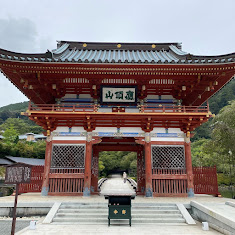
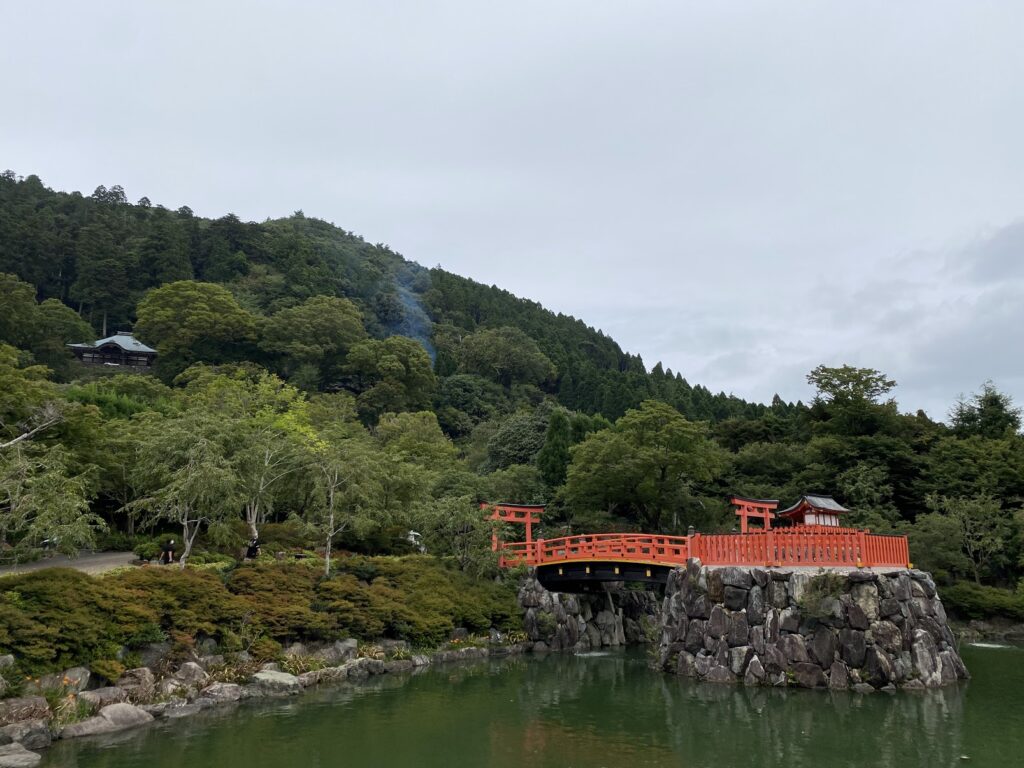
門や 木の根元、 石の上など、 至る所に 小さくて、かわいいだるまが
置かれていました。
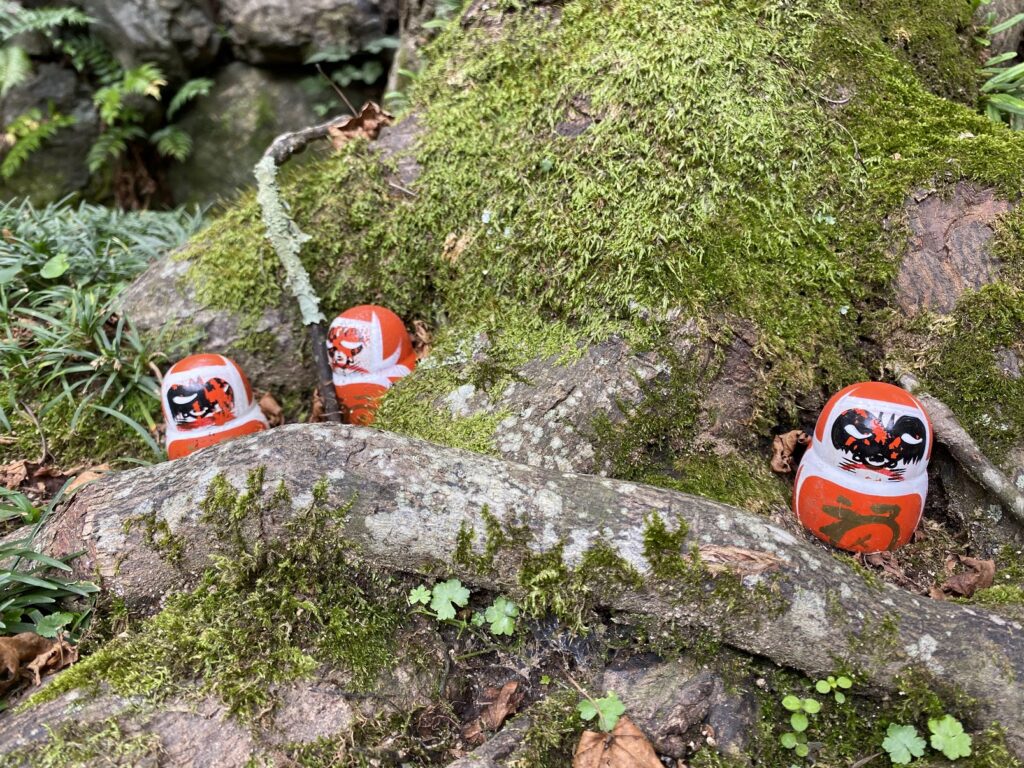
達磨の両目は すでに書かれていたので、 たくさんの願い事が 叶ったようですね。
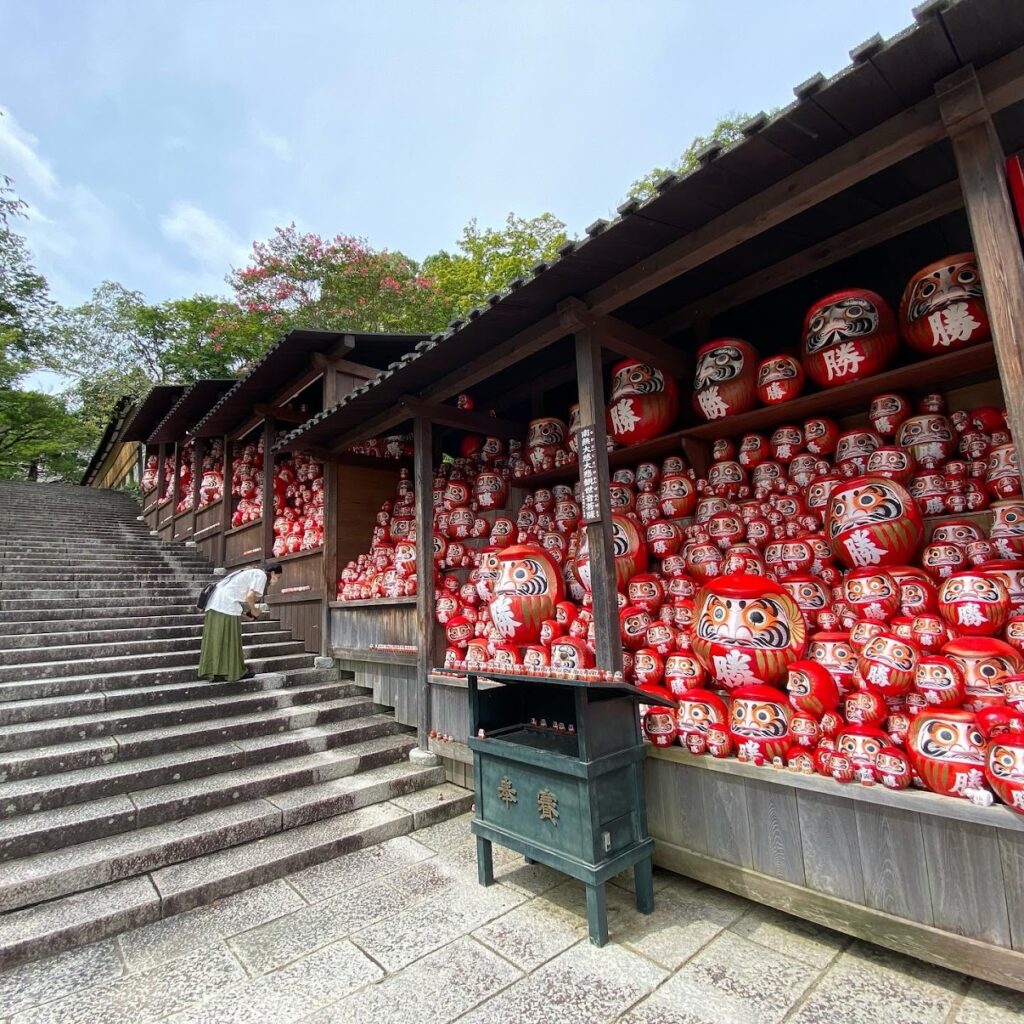
さらに階段を上ると、 勝尾寺の本堂があり、
そこで 小さな達磨に入ったおみくじを引きました。]

小さなだるまは 持って帰ることができ、 今では 家に飾っています。
お賽銭を入れ、 拝んでから 勝尾寺を後にしました。
[Translation]
In the Heian period, the first name of this temple was “Katsuoji” because the priest of this temple treated the disease of the emperor. However, it was so scary for the priest to use the Kanji “王” which means “King” that the name of the temple became “勝尾寺” instead. If you want to know about the history of this temple, please look them up from the link below.
After we pay the entrance fee and go in, the big gate welcomes us first. Going through the gate, you can see the exquisite garden around there. A lot of small and cute Dharuma were left all over the premises such as on the gate, roots of trees and some rocks. When you reach the top of the large stairs, you can see many Dharumas. It seemed that a lot of wishes had come true because both eyes of all the Dharumas were already drawn. Going upstairs more, we could see the main hall of Katsuoji temple and draw an oracle in the small Dharuma there. We can bring them back so I put them up in my house. After tossing some donations and worshipping, I left Katsuoji temple.
箕面の滝
勝尾寺の近くには 箕面の滝があります。
せっかく近くにいるので、 寄らずに帰るのは もったいないですよね。
駐車場に車を止めて、 10分ぐらい 坂を下っていくと、
大きな滝が 姿を現しました。

滝の近くでは もみじの天ぷらを 食べることができます。
これが けっこう おいしい。
川の水は 非常にきれいで たまたま オオサンショウウオを見ることができました。
その後、 ちょっときつい 坂道を上り、 帰りました。
[Translation]
There is Minoh Falls nearby Katsuoji temple. Since I was close by, it might not make sense to go home without stopping by. I parked my car in the nearby parking lot and went down the hill for about 10 minutes, then the big falls showed up. You can eat Tempura of maple leaves near the falls. This is pretty good. The water of the river is quite clear and I could see a Japanese giant salamander by chance. After that, I went up a little steep hill and went home.
文法
①ます-form without ます + やすい = easy/comfortable to do something
例 住みやすい町/読みやすい本/書きやすいペン/使いやすい辞書 など
②Basic form of verbs/な-adjectives without な+だ/い-adjectives/noun+だ
+ そうだ/そうです = I heard that…
It can be used for things you heard.
例
彼は大阪に住んでいるそうです。I heard that he is living in Osaka.
彼女は元気だそうです。I heard that she is doing well.
あの先生はやさしいそうです。 I heard that the teacher is kind.
これは彼の辞書だそうです。I heard that this is his dictionary.
③Basic form of verbs/な-adjectives/い-adjectives/noun+の + ようだ/ようです
= It seems that…/I heard that…
It can be used for uncertain things that you heard or looked.
例
彼は日本語を勉強しているようです。It seems that he is studying Japanese.
このペンは便利なようです。This pen seems to be handy.
あのお化け屋敷は怖いようです。That ghost house seems to be scary.
一番背が高いのは彼のようです。The tallest person seems to be him.
④sentence + ということから = Based on the fact that(Formal expression)
例 日本語が難しいということから、 勉強するのをやめた。
I stopped studying Japanese based on the fact that it’s difficult.
⑤Negative form of verbs without ない + ずに = without doing
(※する take on the irregular way for this grammar. する becomes せずに.)
例
ガイドブックを読まずに旅行するのが好きです。
I like traveling without reading a guidebook.
勉強せずにJLPTに合格するのは難しい。 It is difficult to pass JLPT without studying.
語彙と漢字
広める[TV] spread/promote/disseminate/amplify
広まる[IV] spread/go around
広げる[TV] stretch/extend/expand
広がる[IV] spread/go around
先日[N] the other day
通勤(する)[N][IV with する] going to work
禅宗[N] Zen
僧侶[N] priest
置物[N] figure
馴染み[N] familiarity
やがて[Adv.] eventually
教え[N] teaching
伝わる[IV] go around
武士[N] samurai/Japanese soldier
向かう[IV] head to somewhere
坐禅(座禅) Zen meditation
腐る[IV] go bad/get rotten
伝説[N] legend
持ち主[N] a person having objects or ability
例 この本の持ち主/すごい語彙力の持ち主
縁起[N] fortune
This can’t be used alone. We say 縁起がいい/悪い which mean fortunate/unfortunate.
飾る[TV] to decorate
徐々に[Adv] gradually
願い事[N] a wish
叶える[TV] make a wish/make dream come true
例 私の願い事が叶ったらいいな。/夢を叶えるために、日本に来ました。
視力[N] eyesight
低下させる[TV] decrease/make something go down
例 わたしのやる気を低下させる要因は、環境だと思う。
疱瘡[N] smallpox
流行る[IV] get trendy 例 日本では今、鬼滅の刃が流行っている。
(と)言われている[Ph] they say that/it is said that
例 日本人は几帳面な性格だと言われている。 几帳面な[Adj.] tidy/organized
入園料[N] an entrance fee for gardens, amusement parks and zoos etc.
大きな[Adj.] big
大きな/小さな are used only before nouns to modify. 大きい/小さい are used at the end of sentences too.
例 ✓あの家は大きい。 ✖あの家は大きな。
門[N] a gate
迎える[TV] to welcome
くぐる[TV] go through something arched such as tunnels/gates etc.
庭園[N] a great garden
根本[N] a root/a foundation/a basis
至る所に[Ph] everywhere/all over/left and right
両目[N] both eyes
すでに[Adv.] already
本堂[N] the main hall of temples
おみくじ[N] an oracle
引く[TV] draw/pull
持って帰る[TV] bring something back home
お賽銭[N] the donation for temples and shrines
拝む[TV] worship/pray
後にする[Ph] leave somewhere
せっかく[Adv.] the expression to emphasize the reason why someone does.
例 せっかく京都に来たし、お寺に行こうよ。
せっかく日本語を話せるんだから、日本にいけば?
寄る[IV] stop by/drop by
もったいない[Adj.] This is used for something that should be tried by someone.
例 京都にいるのにお寺に行かないのは、もったいないよ。
坂[N] slopes/hills
姿を現す[Ph] show up/appear
たまたま[Adv.] by chance
オオサンショウウオ[N] Japanese giant salamander
その後[Ph] after that
The ways to read are そのご or そのあと. そのご sounds a bit more formal than そのあと.
きつい[Adj.] tough
坂道[N] roads with hills
⇩For more information about Katsuoji temple⇩
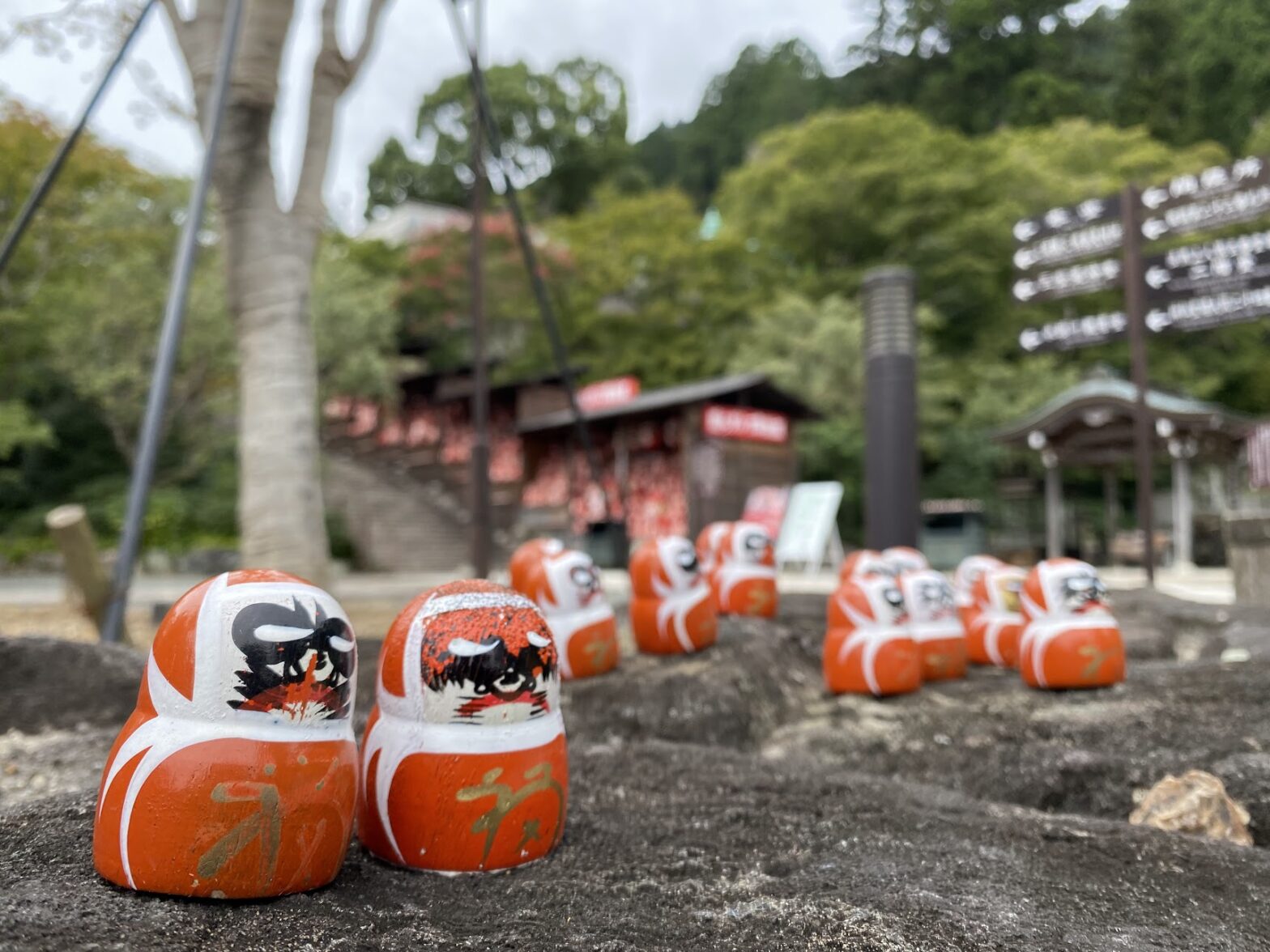
Leave a Reply